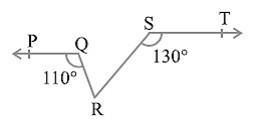Answer:
1) A chromosome is a long DNA molecule with part or all of the genetic material of an organism. Most eukaryotic chromosomes include packaging proteins called histones which, aided by chaperone proteins, bind to and condense the DNA molecule to maintain its integrity
2) Photosynthesis is a process used by plants and other organisms to convert light energy into chemical energy that, through cellular respiration, can later be released to fuel the organism's activities.
3) Chromatin refers to a mixture of DNA and proteins that form the chromosomes found in the cells of humans and other higher organisms. Many of the proteins — namely, histones — package the massive amount of DNA in a genome into a highly compact form that can fit in the cell nucleus.
4) Cells are the basic building blocks of all living things. The human body is composed of trillions of cells. They provide structure for the body, take in nutrients from food, convert those nutrients into energy, and carry out specialized functions.
5) Conservation is the act of protecting Earth's natural resources for current and future generations.
6) Drought is a prolonged dry period in the natural climate cycle that can occur anywhere in the world. It is a slow-onset disaster characterized by the lack of precipitation, resulting in a water shortage.

